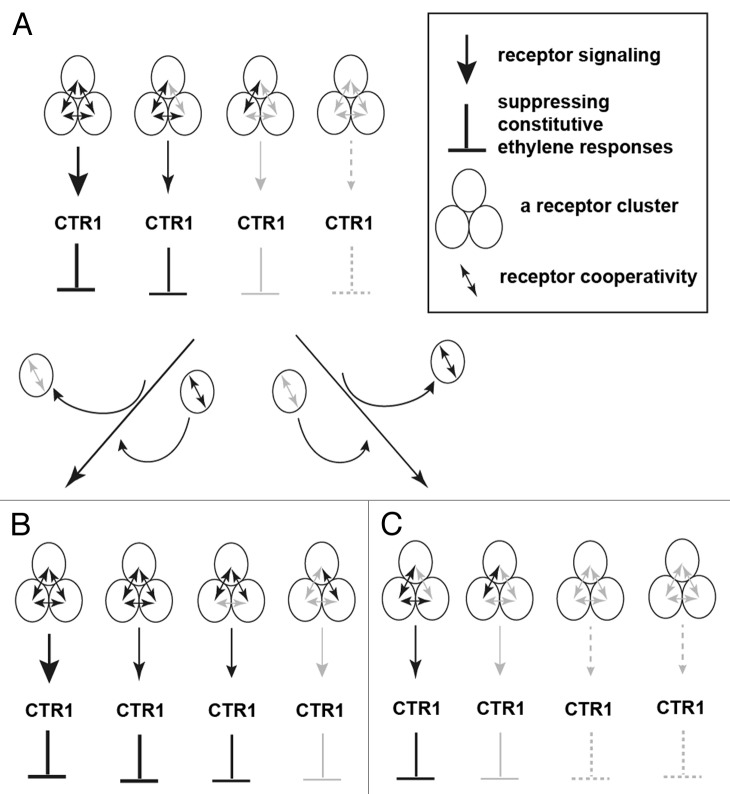Figure 1. A model for the modulation of ethylene responses by formation of a dynamic ethylene receptor cluster. (A) Ethylene receptor clusters may mediate a gradient of receptor signal with strength from strong to weak, by which the constitutive ethylene response is suppressed differentially. Ethylene binding to the receptor prevents the suppression of constitutive ethylene responses by receptor clusters. As a result, the corresponding cells or tissues can respond to ethylene over a wide range of concentration. With the alteration in receptor composition, the total ethylene receptor signal strength can be increased or decreased. The increase in receptor members with strong positive cooperation and decrease in those with weak or negative cooperation elevates the total receptor signal strength (B) The total receptor signal strength can be reduced by an increase in receptor members with weak or negative cooperation and decrease in those with strong positive cooperation (C) With ethylene treatment, the receptor clusters that bind ethylene are signaling inactive and the remaining unbound receptor clusters are still signaling active. With clusters predominantly mediating strong ethylene receptor signal output, high but not low levels of ethylene are sufficient to weaken the total receptor signal output, and the corresponding cells or tissues respond to ethylene of higher concentrations. With clusters predominantly mediating weak signal output, low levels of ethylene are sufficient to weaken the total receptor signal output, and the corresponding cells or tissues respond to low ethylene concentrations. Shading differences indicate different levels of strength in receptor signal output (arrow heads), inhibition of constitutive ethylene responses (lines), or receptor cooperation (double arrow heads).

An official website of the United States government
Here's how you know
Official websites use .gov
A
.gov website belongs to an official
government organization in the United States.
Secure .gov websites use HTTPS
A lock (
) or https:// means you've safely
connected to the .gov website. Share sensitive
information only on official, secure websites.
